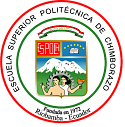Digital twin interface of an UR3 robotic arm to go over the pieces marking for cutting of surfaces
DOI:
https://doi.org/10.47187/perspectivas.vol3iss1.pp32-42.2021Keywords:
Paradigmatic Changes, Smart Industry, Digital Twin, Flexible Production, Cut and Packing AlgorithmAbstract
Nowadays manufacturing industry is facing paradigm production changes, where mass customization is a fundamental pillar in adapting to changing market demands. Today's technology provides the necessary tools that, when integrated with human skills, give way to the Smart Industry thus entering an environment of industrial revolution 4.0. This paper proposes the design of a Digital Twin interface that supports the monitoring activity of the UR3 robotic arm while it performs the marking for surface cutting in the context of flexible production. The interface is achieved through a Human-Computer-Machine interaction (HCMI), while the self-adaptation to production and environmental changes is achieved through a cut and packing algorithm and a camera adapted to the robot, respectively. The interface is implemented and validated through a virtual laboratory case study in which it is observed that the Digital Twin replicates the movement of the robot with a negligible latency time.
Métricas
References
R. Rosen, G. Von Wichert, G. Lo, and K. D. Bettenhausen, “About the importance of autonomy and digital twins for the future of manufacturing,” IFAC-PapersOnLine, vol. 28, no. 3, pp. 567–572, May 2015, doi:10.1016/j.ifacol.2015.06.141.
R. Y. Zhong, X. Xu, E. Klotz, and S. T. Newman, “Intelligent Manufacturing in the Context of Industry 4.0: A Review,” Engineering, vol. 3, no. 5, pp. 616–630, Oct. 2017, doi:10.1016/J.ENG.2017.05.015.
R. Carmen, L. José, C. Cabrera, and L. Renato, “Creación de ambientes virtuales inmersivos con software libre,” Rev. Digit. Univ., vol. 8, no. 6, pp. 3–7, 2007.
A. J. Matteo and E. Coto, “Una herramienta para generar Mundos Virtuales Inmersivos View project SOS Telemedicina View project,” Caracas, 2000. Accessed: Jun. 04, 2020. [Online]. Available: https://www.researchgate.net/publication/228858236.
D. Enríquez, J. J. Arellano Pimente, M. Á. Hernández López, and O. S. Nieva García, “Didactic use of immersive virtual reality with NUI focused on the inspection of wind turbines,” Apertura, vol. 9, no. 2, pp. 8–23, Oct. 2017, doi: 10.32870/ap.v9n2.1049.
L. Pérez, S. Rodríguez-Jiménez, N. Rodríguez, R. Usamentiaga, and D. F. García, “Digital twin and virtual reality based methodology for multi-robot manufacturing cell commissioning,” Appl. Sci., vol. 10, no. 10, 2020, doi: 10.3390/app10103633.
M. L. S. Wallace J. Hopp, Factory Physics. 2011.
J. Lee, H.-A. Kao, and S. Yang, “ScienceDirect Service innovation and smart analytics for Industry 4.0 and big data environment,” Procedia CIRP, vol. 16, pp. 3–8, 2014, doi: 10.1016/j.procir.2014.02.001.
J. Daniel, H. Edgar, S. Cespedes, D. Andres, G. David, and L. Fumagalli, “Human-Computer-Machine Interaction for the Supervision of Flexible Manufacturing Systems : A Case Study,” IFAC-PapersOnLineC, vol. 7, pp. 1–6, 2018.
J. Lee, E. Lapira, B. Bagheri, and H. an Kao, “Recent advances and trends in predictive manufacturing systems in big data environment,” Manuf. Lett., vol. 1, no. 1, pp. 38–41, 2013, doi: 10.1016/j.mfglet.2013.09.005.
A. Parrott and L. Warshaw, “Industry 4.0 and the digital twin,” Deloitte Univ. Press, vol. 5, no. 2, pp. 1–17, 2017, [Online]. Available: https://dupress.deloitte.com/dup-us-en/focus/industry-4-0/digital-twin-technology-smart-factory.html.
C. Koulamas and A. Kalogeras, “Cyber-Physical Systems and Digital Twins in the Industrial Internet of Things,” IEEE Software, pp. 1–4, 2018.
Published
How to Cite
Issue
Section
License
Copyright (c) 2021 Alexis Mariño Salguero, Sofía Judith Sánchez Urresta, Hector Espinoza Velasco, Santiago Martinez

This work is licensed under a Creative Commons Attribution 4.0 International License.
Copyright
The authors of the manuscripts will retain their copyright on their articles published in Pespectivas Journal. These rights allow the authors to present their manuscripts in public, prepare derivative works, reproduce them physically by printing and distribute them on their social or research networks. These rights will remain unchanged as long as the authors respect the publication and free access policy of Perspectivas Journal.
Publication Rights
Perspectivas Journal reserves all first publication rights on each of the articles that the authors have sent to its review and publication process. It implies that authors will only exercise their copyright if they state the source and origin of the publication correctly, mainly when they distribute, share, present, or use their articles' total or partial content.














